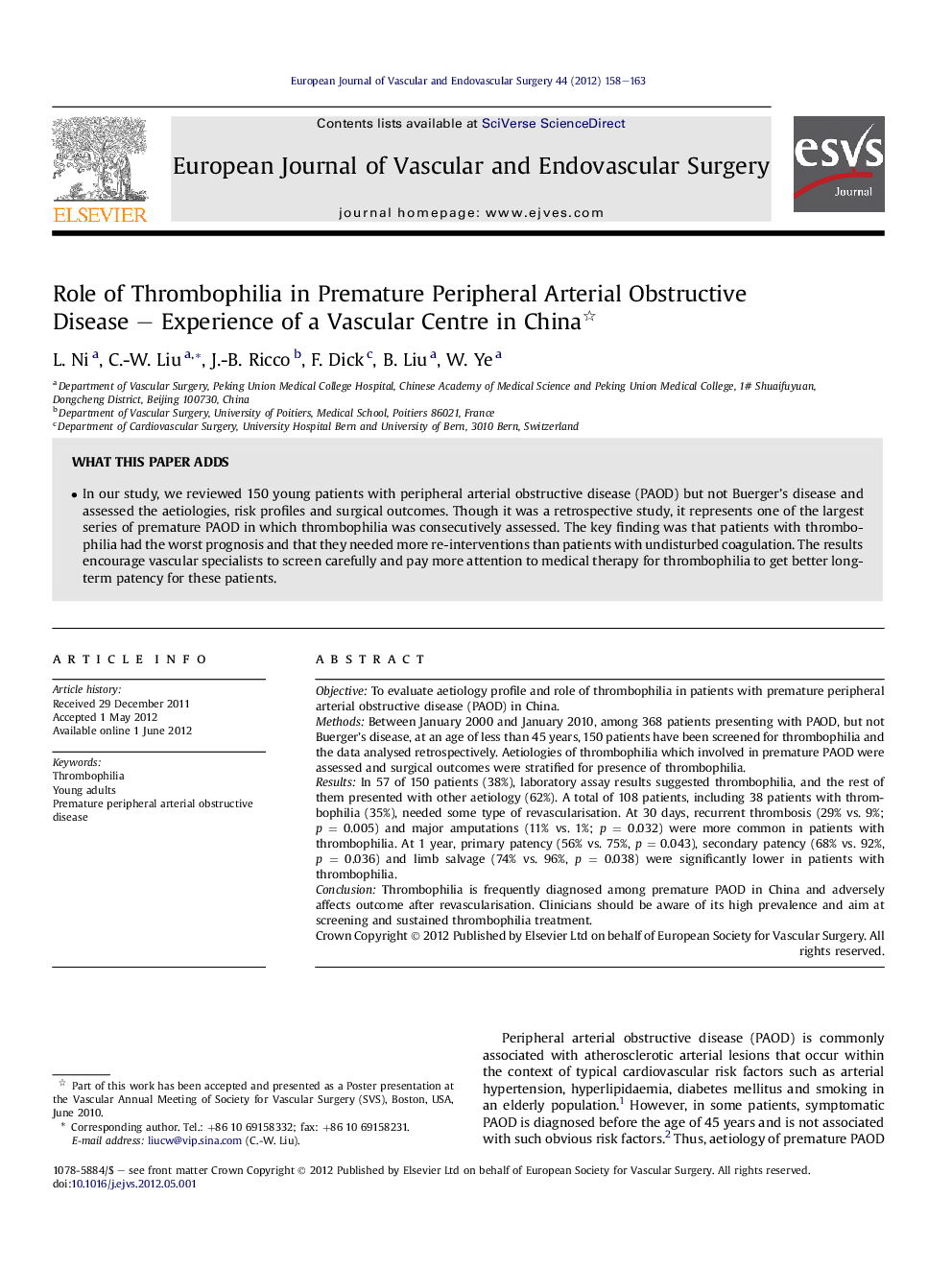| Article ID | Journal | Published Year | Pages | File Type |
|---|---|---|---|---|
| 2912632 | European Journal of Vascular and Endovascular Surgery | 2012 | 6 Pages |
ObjectiveTo evaluate aetiology profile and role of thrombophilia in patients with premature peripheral arterial obstructive disease (PAOD) in China.MethodsBetween January 2000 and January 2010, among 368 patients presenting with PAOD, but not Buerger's disease, at an age of less than 45 years, 150 patients have been screened for thrombophilia and the data analysed retrospectively. Aetiologies of thrombophilia which involved in premature PAOD were assessed and surgical outcomes were stratified for presence of thrombophilia.ResultsIn 57 of 150 patients (38%), laboratory assay results suggested thrombophilia, and the rest of them presented with other aetiology (62%). A total of 108 patients, including 38 patients with thrombophilia (35%), needed some type of revascularisation. At 30 days, recurrent thrombosis (29% vs. 9%; p = 0.005) and major amputations (11% vs. 1%; p = 0.032) were more common in patients with thrombophilia. At 1 year, primary patency (56% vs. 75%, p = 0.043), secondary patency (68% vs. 92%, p = 0.036) and limb salvage (74% vs. 96%, p = 0.038) were significantly lower in patients with thrombophilia.ConclusionThrombophilia is frequently diagnosed among premature PAOD in China and adversely affects outcome after revascularisation. Clinicians should be aware of its high prevalence and aim at screening and sustained thrombophilia treatment.
